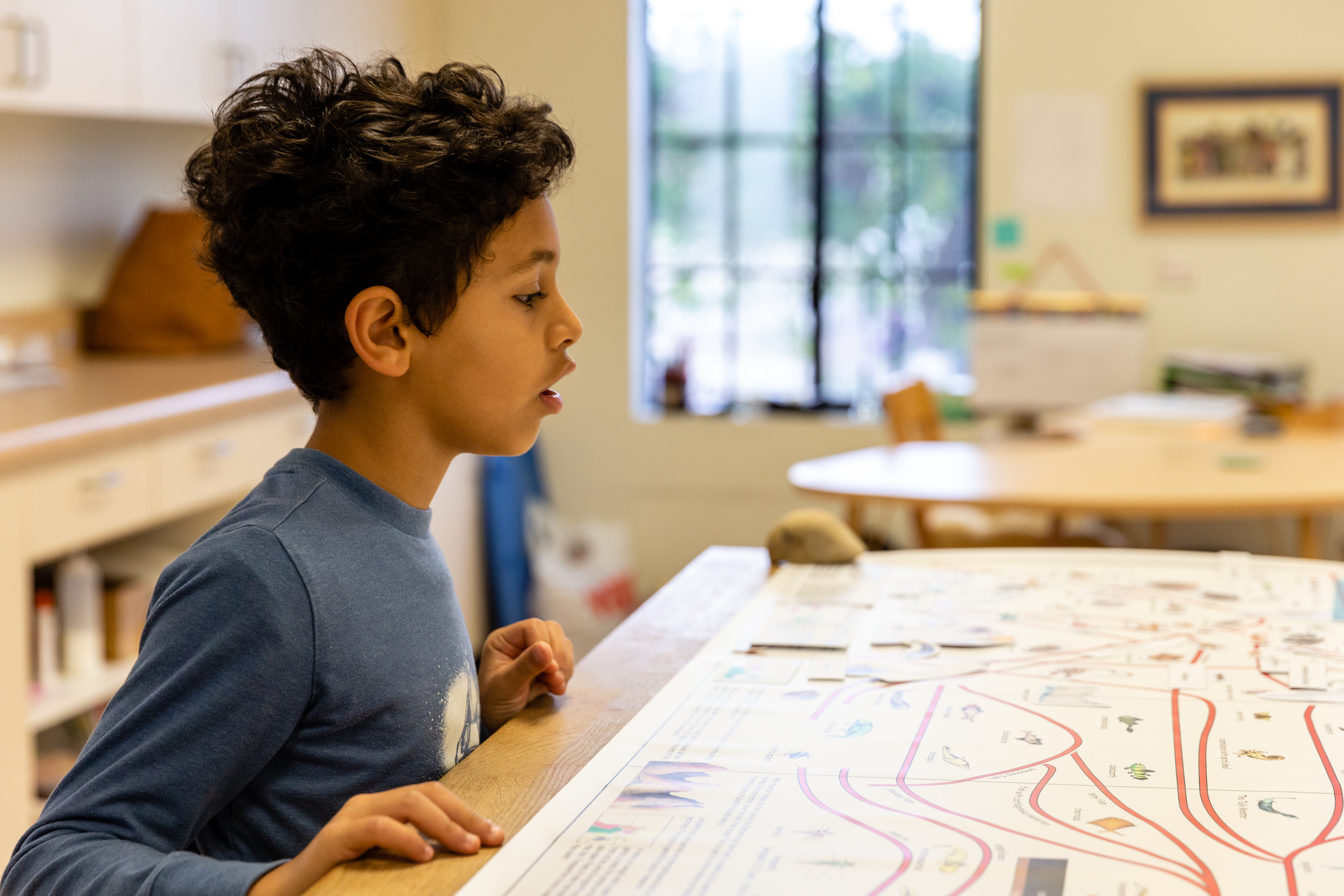(858) 759-0631
The weather has been beautiful and we have been spending extra time out in the sunshine. I was watching one of our new little ones examine a flower in Mrs. Stone's garden. He was starting so intently that he was completely unaware of all the "hubbub" going on around him. It was a beautiful moment, not only because I have never seen this child sit still for so long, but I knew I was witnessing a powerful moment of concentration.
Learning, by itself, cannot happen without concentration. Whether we are learning to tie our shoes, write our name, wash a car or solve complex algebraic equations, there is intense concentration specific to the task at hand. Dr. Maria Montessori understood the power of concentration, and her methodology is designed to nurture this power.
As the child grows, concentration and attention span increase. In fact, that is an indirect aim of most Montessori lessons. Practical Life activities are the cornerstone of the Montessori curriculum and these activities allow the building independence, improving coordination, and following steps in a sequence. All of these build on focus and concentration, with some activities requiring fifteen minutes or more to complete.
In the Montessori classroom and home, there is a deep respect for the child. In the Montessori environment it is rare that a child is interrupted while he is focused on his work. Our modern culture contains a multitude of distractions: video games, computers, television, and any number of sports- or arts-related extra activities. Combined, these can create an overabundance of sensory stimulation. Maintaining a calm, controlled, prepared Montessori environment and a clear approach to reducing distractions and sensory overload is an important task of the Montessori guide. This directed approach is designed to foster the power of concentration in children, so that they may grow to become happy, independent, and fulfilled adults.
Montessori realized that we cannot force interest or concentration onto the child. Therefore, it is the responsibility of the adult to allow the child to guide us. Here are some suggestions to consider which translate just as easily to the home as they do in the classroom:
Make Observations – By observing the child, you will notice which activities she stays with. Using directive praise (rather than evaluative), let her know you are pleased that she completed a task. Instead of “What a good girl to finish washing the table.”, try “I appreciate how clean the table is. Now we will be able to eat lunch at it”.
Offer Choices – Now that you’ve observed her preferences, let her choose activities she prefers. “I see that you like pouring. Would you like to pour the water today for dinner or at bedtime?”
Model Concentration – Children are watching you all the time. By exaggerating your own movements and efforts at concentration, children will understand that this is a task to be taken seriously.
Encourage Repetition – When your child completes a task, suggest she try again. “I appreciate the way you worked on that puzzle. Would you like to do it again?”
Respect the Child’s Work – Just as adults need to concentrate on tasks and work, so do children. Refrain from interrupting a child who is absorbed in a task. Interrupting her concentration is disrespectful.
Concentration is crucial to learning. We need to provide activities which engage a child so that she reaches a deep level of intense concentration sustainable over an extended period of time. As the ability to concentrate develops, the child will learn to persevere and move on to greater, more complex concepts and tasks.
-Miss Heather
Resource and Inclusive Education Coordinator
(references montessoritraining.blogspot.com)

